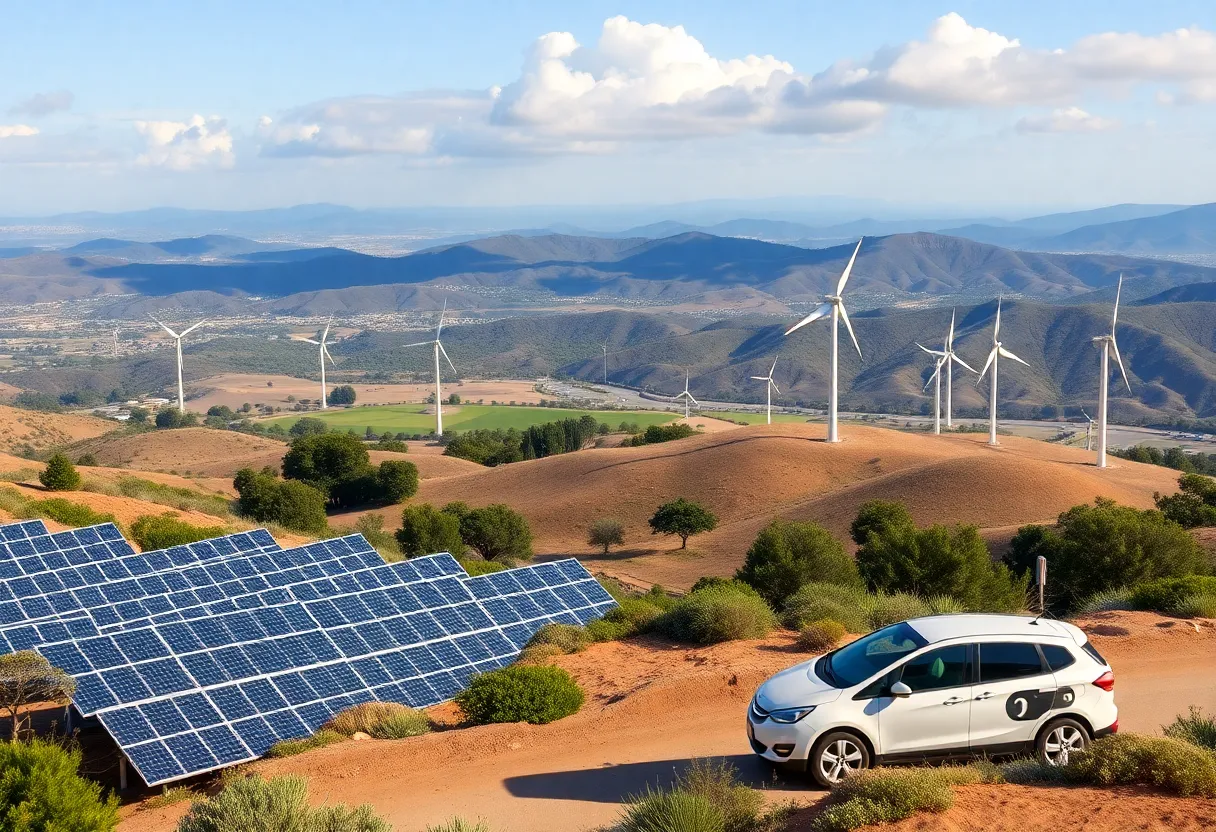News Summary
California has reached a significant milestone in its clean energy transition, with clean energy sources accounting for 67% of the state’s electricity supply in 2023. This increase from 61% in 2022 reflects the state’s commitment to renewable energy by 2045. Despite high electricity prices, public support for clean energy initiatives remains strong. The state has also increased battery storage capabilities substantially, showcasing its efforts to meet rising electricity demand driven by electric vehicle adoption. However, recent safety concerns regarding battery technology indicate challenges ahead for California’s clean energy future.
California has reached a significant milestone in its clean energy transition, with clean energy sources accounting for 67% of the state’s retail electricity supply in 2023, as reported by the California Energy Commission. This marks a notable increase from 61% in 2022 and surpasses the previous record of 64% established in 2019.
Under a state law enacted in 2018, California aims to achieve 100% renewable and carbon-free electricity by 2045. The state’s clean energy mix includes sources such as solar, wind, geothermal, large hydropower, biomass, and nuclear energy, contributing to this record-breaking achievement.
Governor Gavin Newsom has commended California’s progress in clean energy adoption, underscoring that the state, now functioning as the world’s fourth-largest economy powered by two-thirds clean energy, is showing substantial leadership in environmental policy. The latest data reflects a transformative shift in energy sourcing that was once deemed unattainable.
Despite reaching these clean energy targets, California residents continue to face some of the highest electricity prices in the nation. The average retail electricity price was recorded at 31.77 cents per kilowatt-hour in April 2023, nearly double the national average of 17.45 cents. This high cost of electricity has drawn criticism from political opponents and prompted discussions about the overall affordability of energy for consumers.
Public support for clean energy initiatives remains strong among Californians, with 66% of voters endorsing the law mandating 100% clean energy by 2045. However, it is important to note that high electricity costs are influenced by several factors, including investments aimed at mitigating wildfire risks and necessary infrastructure upgrades for utility providers.
The state has also seen a dramatic increase in battery storage capabilities, which rose from 1,474 megawatts in 2020 to 15,763 megawatts in 2023. This growth aims to address the challenges associated with intermittent renewable energy sources, making it essential for maintaining a stable energy supply as consumption rises.
However, recent safety concerns regarding battery storage technology following a significant fire incident at a facility in Moss Landing have led to community pushback against new battery projects. This incident highlights the complexities and challenges associated with expanding the clean energy infrastructure, as local communities weigh the benefits of renewable energy against potential risks.
The demand for electricity in California is projected to continue growing, primarily due to the increasing adoption of electric vehicles, which represented 25% of new car sales in the state. This rise in electricity demand necessitates further investment in energy storage and clean energy technologies.
Despite the advancements in renewable energy initiatives, the clean energy industry faces challenges from recent federal legislative rollbacks that cut tax incentives for solar, wind, electric vehicles, and various clean technologies. These changes have raised concerns regarding the viability of upcoming projects and the potential implications for job growth within California’s burgeoning clean energy sector.
Looking forward, California will need to project a demand for 52,000 megawatts of battery storage by 2045 to support its rapidly growing electricity needs and achieve its ambitious clean energy goals. As the state moves towards a future powered predominantly by clean energy, the balancing act of maintaining affordability, safety, and environmental responsibility will remain crucial in shaping its energy landscape.
Deeper Dive: News & Info About This Topic
- Mercury News: California Reaches New Record Clean Energy Milestone
- Wikipedia: Renewable Energy in California
- LAist: California’s Wind and Solar Projects Face New Federal Hurdles
- Google Search: California clean energy 2023
- Newsweek: California Hits Historic Energy Milestone
- Google Scholar: California clean energy policies
- The Hill: California Power Grid Clean Energy Milestone
- Encyclopedia Britannica: Renewable Energy
- San Diego Union Tribune: Newsom Boasts of California Clean Energy Milestones
- Google News: California energy costs

Author: STAFF HERE MISSION VIEJO WRITER
The MISSION VIEJO STAFF WRITER represents the experienced team at HEREMissionViejo.com, your go-to source for actionable local news and information in Mission Viejo, Orange County, and beyond. Specializing in "news you can use," we cover essential topics like product reviews for personal and business needs, local business directories, politics, real estate trends, neighborhood insights, and state news affecting the area—with deep expertise drawn from years of dedicated reporting and strong community input, including local press releases and business updates. We deliver top reporting on high-value events such as Oso Fit 5K Fun Run and Community Health Fair, Walk Against Drugs & Community Fair, and National Night Out. Our coverage extends to key organizations like the Mission Viejo Chamber of Commerce and Providence Mission Hospital Mission Viejo, plus leading businesses in retail and education that power the local economy such as The Shops at Mission Viejo, Capistrano Unified School District, and Amazon Delivery Station. As part of the broader HERE network, including HEREAnaheim.com, HEREBeverlyHills.com, HERECostaMesa.com, HERECoronado.com, HEREHollywood.com, HEREHuntingtonBeach.com, HERELongBeach.com, HERELosAngeles.com, HERESanDiego.com, and HERESantaAna.com, we provide comprehensive, credible insights into California's dynamic landscape.



